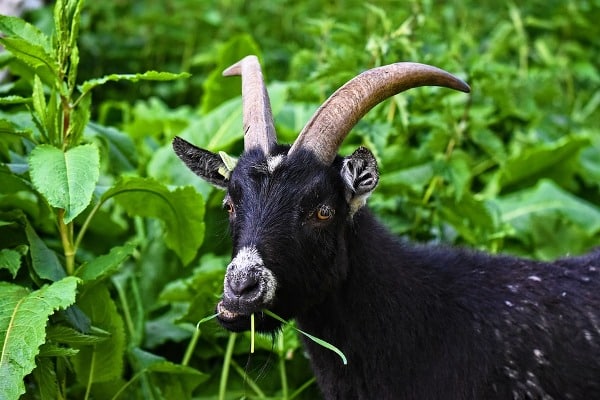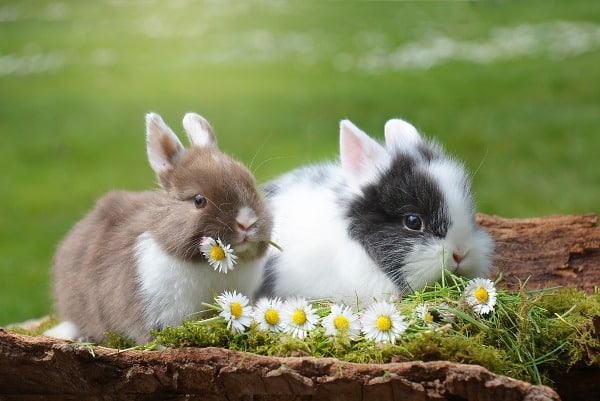How To Find Age of Farm Animals Guide:
Today we discuss the topic of: “How To Find Age of Farm Animals”.
How to find the age of goat, sheep, cow, pig and other animals
Importance:
What is the importance of determining the age of animals?
The productive life of animals is comparatively brief, the height of their usefulness is limited to a few years. For this cause, the returns from livestock tend to decrease with advanced years. The age of animals, then, is a matter of utmost importance to the breeder, the seller, and the buyer.
Physical changes within the animal body are constant. They affect the general outward appearance and disposition and, within definite limitations, it is not difficult by the general appearance to distinguish the young animal from one that has reached maturity, or even to find out the approximate age of an old animal. Changes which take place in the teeth, but, afford the best opportunity of determining the age.
Establishing the age of farm animals during the appearance of the teeth is no new thing. The possibility of judging in this manner apparently was well identified in ancient days. Certainly, for generations, the appearance, development, and subsequent wear of the teeth have been recognized as a dependable means of judging approximately the age of animals.
With a knowledge of the age at which the teeth come out, the time for shedding temporary or milk teeth and they alternate with permanent teeth, and the changes in a form which effect from natural wear, the approximate age of farm animals can be determined. If you are into commercial livestock farming, you must read this guide of how to find age of farm animals.
How To Find Age of Farm Animals
Age of a goat
Determining the age of a goat is very easy to do for the first few years of its life. The process is called toothing a goat. A goat has no teeth in the upper front of its mouth, but it has 8 teeth in the lower front. The size and condition of these eight teeth are the best gauges to find out the goat’s age. A goat is born with 8 baby teeth in the lower front gum. All eight teeth are equally small sized. When the goat approaches a year of age, give or take a few months, the two center front baby teeth are changed by two permanent teeth. Hence, a goat with only two permanent teeth is called a two-toother and is considered at least one year old.

The same process occurs again as the goat approaches two years of age. After that, two baby teeth, one on each side of the two permanent teeth, are replaced by two more permanent teeth. This goat is known as a four-toother goat and is two years of age. A goat that is between one year of age and two years old is called coming two’s.
At three years of age, the third set of two teeth, one on each side of the stable teeth, is replaced by permanent teeth, and this goat is now a six-toother. Presently it will be coming three’s, age-wise. And the last two baby teeth become permanent teeth as the goat approaches 4 years of age, hence the animal is an eight-toother.
From age four onward, the procedure for determining the goat’s age becomes less precise and an exact age is difficult to determine. As the goat develops older, the teeth begin to buck out and spread. By the instant the goat is ten years old, the teeth are generally pretty worn. Depending upon what the goat has been fed or how tough its forage has been or whatever injuries the goat may have sustained to its mouth through its lifetime.
Read: Care for Laying Birds.
Age of goats
- Animal under 1-year-old (no permanent teeth)
- One year old (2 permanent teeth)
- Two years old (4 permanent teeth)
- Three years old (6 permanent teeth)
- Four years old (8 permanent teeth)
- Old animal, more than four years old
Age of sheep
The estimated age of a sheep can be determined by examining their upper incisor teeth. At birth, lambs have eight baby (or milk) teeth or temporary incisors set in their lower jaw. They don’t have several teeth on their top jaw, only a dental pad.
At approximately one year of age, the central pair of baby teeth are replaced by a couple of permanent incisors. At the age of two, the second pair is replaced by permanent incisors. At three and four years, the third and fourth pairs of baby teeth are replaced.

At approximately 4 years of age, a sheep has a full mouth of teeth. As it ages past four, the incisors teeth will start to spread, wear, and finally break. When a ewe has lost some of her teeth, called a “broken mouth” ewe. When she’s lost all her teeth, she’s known as “gummer.” A sheep with no incisor teeth can still survive because it uses generally its molars for chewing feed. However, it will have a harder time grazing, especially short vegetation.
Age of Cow or Bull
How to determine the age of Cow or Bull?
The age of the cow or bull can be determined or find using two methods.
- The teeth
- The rings on the horn.
Calculate the age of a cow or bull using the teeth:
A Cow or Bull erupts their teeth in pair and it starts at the lower jaw. Like humans, cattle have two sets of teeth, milk teeth, and permanent teeth. Only the stable teeth are considered in the exercise. The permanent teeth in cow or bull erupt at the age of two. Meaning after 2 years, the first pair of permanent teeth erupt. Before the age of two, all the milk teeth would have emerged and fallen to allow the placement of permanent teeth.
Remember, the first pair of the permanent teeth appear after two years of age; this means that if the bull or cow has two teeth or a pair, the bull or cow is two years old. If you can count four teeth or two pairs, it means the cow is 3 years old, 3 pairs of teeth or 6 teeth mean the cow or bull is four years old.
Determine the age of the cow or bull using the rings on the horn:
The horn is one of the physical features of cattle. It is normally used for defense. This horn can as well be used by the farmer to find the age of the cow or bull.
Through the rings that circumvent on the horns.
Just like the permanent teeth, the horn of cattle has emerged after the age of two. The growth of the horn is specified by the rings that form around the horn. The ring is as an effect of the extension of the horn as it grows. The higher the number of rings on the horn, the older the cattle as shown in the formula below.
N + 2 = A
Where N is the number of rings establish on the horn and A is the age of the cow or bull gotten from the easy arithmetic done.
Age of cattle
- Under two years old (No permanent teeth)
- Two years three months (2 permanent teeth)
- Three years old (4 permanent teeth)
- Three years six months (6 permanent teeth)
- Four years (8 permanent teeth)
- Old animal, over four years old
Age of Horses and Mules
The ordinary observer can readily learn to notify the age of horses or mules with considerable accuracy until the animals have passed their eighth year. Beyond this time, even those who are experienced can find it difficult to determine the exact age.
Read: How to Maintain Farm Records.
The mature male horse has approximately 40 teeth. Twenty-four of these are molars or grinders, 12 are incisors or front teeth, and four are tushes or pointed teeth. The two central incisors are known as central or nippers; the next 2, 1 on each side of the nippers, are known as intermediates or middles, and the last, or outer pair, the corners. The tushes are positioned between the incisors and the molars. They are not generally present in the mare, and accordingly, she can be considered to have a total of 36 teeth rather than 40, as in the male.
The young animal, whether male or female, has 24 temporary teeth, normally called milk teeth, as they are much whiter than the permanent teeth. These milk teeth normally consist of 12 incisors and 12 molars. The latter is the three back teeth on each side of both the upper and the lower jaw. The milk teeth are shed and replaced by stable teeth at fairly definite periods, which serve as an index in determining the age of young colts.
Age of Rabbit

It is an unfortunate truth that there is no easy approach to tell the age of a rabbit. It is certainly not possible to date a rabbit’s age down to an exacting date or number of years. However, by looking at some specific clues, you must be able to determine if the rabbit is young (birth to adolescence), adult, or elderly.
Observe the rabbit’s behavior. Hyperactivity, frantic digging and chewing on anything and everything can specify the bunny is still a teenager. Rabbits generally become mellower with age; while still curious, older rabbits will move more slowly and sleep more.
A young rabbit is up to nine months of age. An adult rabbit is approximately nine months to 4 to 5 years of age. An elderly rabbit of 4 to 5 years upwards. Some rabbits live to be 10 to 12 years of age.
That’s all folks about how to find age of farm Animals.
Read: Role and Types of Grow Lights in Indoor Gardening.